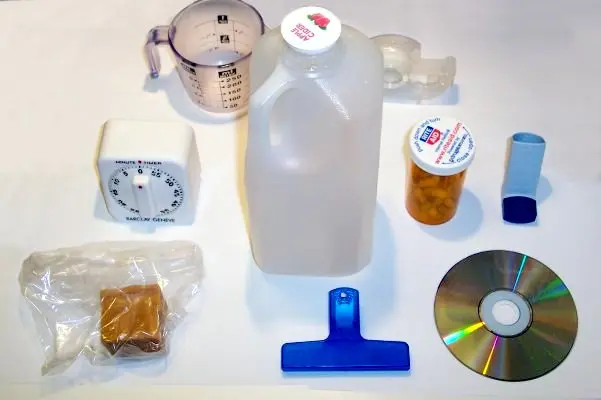Plastic has made our lives easier, cheaper, and more convenient. But hidden within those clear shampoo bottles, food wrappers, IV tubes, and vinyl floors are invisible hitchhikers — and one of them may be silently contributing to hundreds of thousands of deaths every year.
Recent scientific findings suggest that one particular plastic additive may be playing an alarming role in the world’s leading cause of death: heart disease.
What Is DEHP?
DEHP — short for di-2-ethylhexyl phthalate — is a tongue-twisting chemical, but it has a simple job: to soften plastic. Found in polyvinyl chloride (PVC) products, DEHP keeps plastics flexible — which makes it indispensable in medical tubing, packaging, and many consumer goods.
But this seemingly helpful chemical doesn’t just stay in plastic. It leaches out. It slips into the air, food, water, and skin. And once inside your body, DEHP starts doing more than just minding its own business.
Messing With Our Hormones
DEHP belongs to a family of compounds known as phthalates. These are called “endocrine disruptors,” which means they interfere with the body’s hormonal system — the chemical messengers that control everything from metabolism to mood.
Hormonal disruption is not a minor issue. Over the years, phthalates like DEHP have been linked to a cascade of health problems: obesity, diabetes, reproductive issues, pregnancy complications — and increasingly, cardiovascular diseases.
The DEHP–Heart Disease Link
In a recent study published in eBioMedicine, researchers investigated how exposure to DEHP in 2008 lined up with cardiovascular deaths in 2018. Their startling conclusion: around 350,000 premature deaths that year may be associated with DEHP exposure — mostly due to heart disease.
To be clear: this does not mean DEHP directly causes heart attacks. It means there is a significant statistical link between high exposure levels and increased heart disease deaths. Correlation, not causation — but the association is too strong to ignore.
Why Some Regions Are Hit Harder Than Others
The study found that regions such as South Asia, East Asia, and the Middle East bore the brunt of these DEHP-related deaths. Why?
It turns out that these areas are experiencing rapid industrialization and a growing demand for plastic products — often without strong environmental regulations or public health monitoring systems. In contrast, countries like the U.S., Canada, and many European nations have surveillance programs to track chemical exposure.
This imbalance in global monitoring means many people may be exposed without even knowing it — and without the ability to take steps to reduce their risk.
What Happens When Chemicals Combine?
Here’s where it gets even more complex. DEHP is just one of many phthalates people encounter daily. Think of your body not as a test tube with one chemical, but as a busy train station — with multiple passengers arriving, interacting, and influencing each other.
Different phthalates have different chemical structures and biological effects. Some might magnify each other’s toxicity. Others might counteract. But current models don’t account for these chemical cocktails, which makes it hard to pin down precise risks.
As Dr. Mahua Choudhury, a molecular biologist, puts it: “We don’t live in a world of single exposures. We need to understand the mixture effect.”
Lifestyle, Environment, and the Bigger Picture
It’s also important to note that chemical exposure doesn’t operate in a vacuum. Personal health, lifestyle choices (diet, smoking, exercise), pre-existing conditions, and genetics all play a role in how vulnerable someone is to heart disease. The recent study didn’t account for these variables, meaning the actual relationship may be more complex — or even more dangerous — than we realize.
Still, the data is a wake-up call. When hundreds of thousands of deaths potentially trace back to something as avoidable as a plastic additive, it’s time to ask hard questions.
What Can We Do?
While more research is urgently needed, we don’t have to wait for perfect data to take practical steps:
- Choose phthalate-free products: Look for “phthalate-free” or “PVC-free” labels on items like cosmetics, toys, and food containers.
- Cut down on plastic use: Bring your own reusable bags, water bottles, and lunch boxes.
- Be cautious with food packaging: Avoid heating food in plastic containers, especially in microwaves.
- Support policy changes: Encourage lawmakers to tighten regulations on endocrine-disrupting chemicals.
A Plastic Future — or a Healthier One?
Plastic isn’t going anywhere. It’s deeply woven into modern life. But our understanding of how it affects human health is evolving — and fast.
If the latest research is any indication, it’s time to rethink the chemicals we allow in everyday materials. The price of convenience shouldn’t be measured in lost lives.
We may not be able to see DEHP, smell it, or taste it. But its impact may already be written in the silent stories of rising heart disease around the globe. It’s time to pull back the plastic curtain — and take a closer look at what’s hiding inside.
Sources Used:
While this article was independently written for Everyman Science, it draws inspiration from A chemical in plastics is tied to heart disease deaths and a recent peer-reviewed research and public health commentary, including findings published in eBioMedicine.

